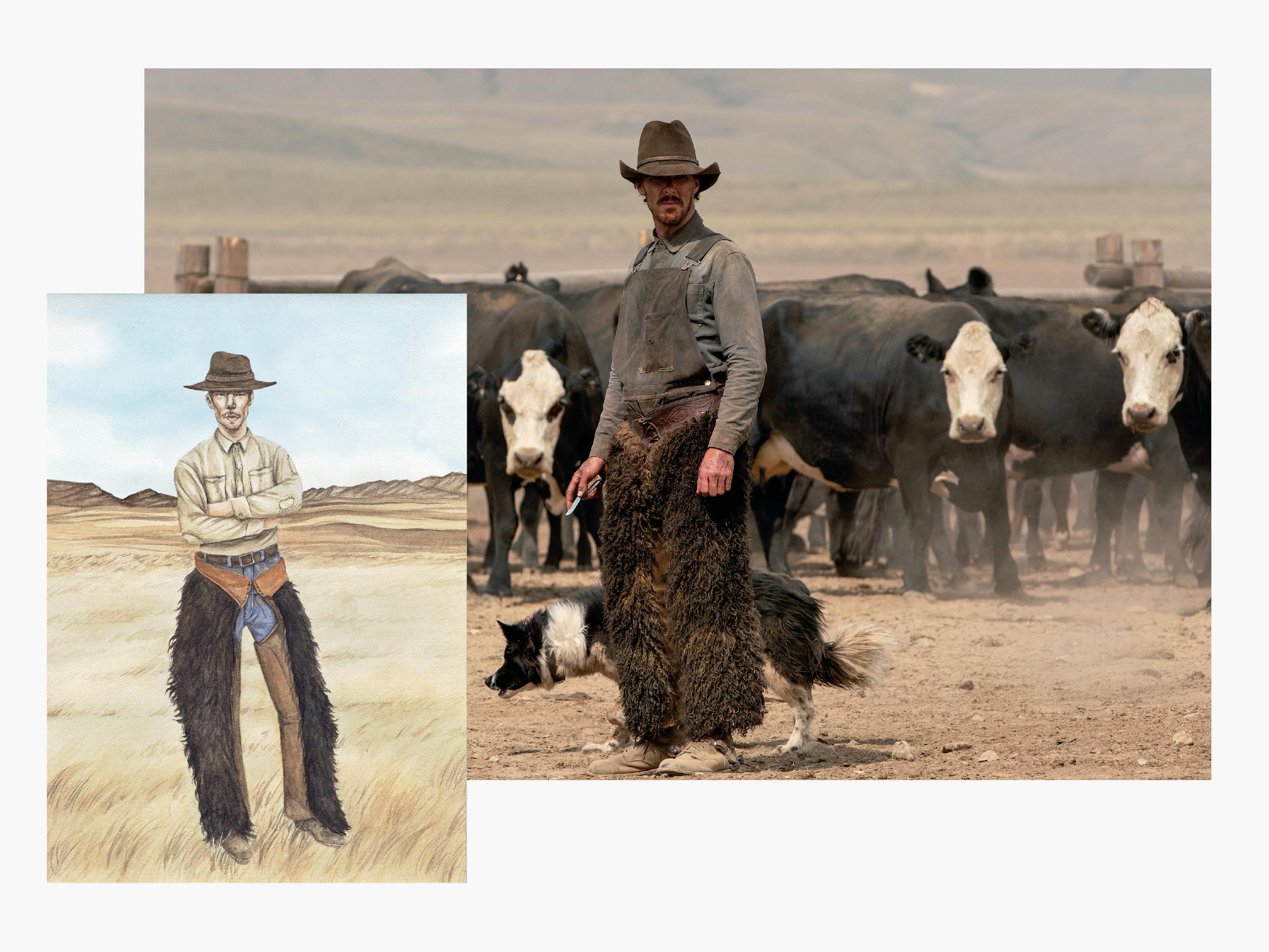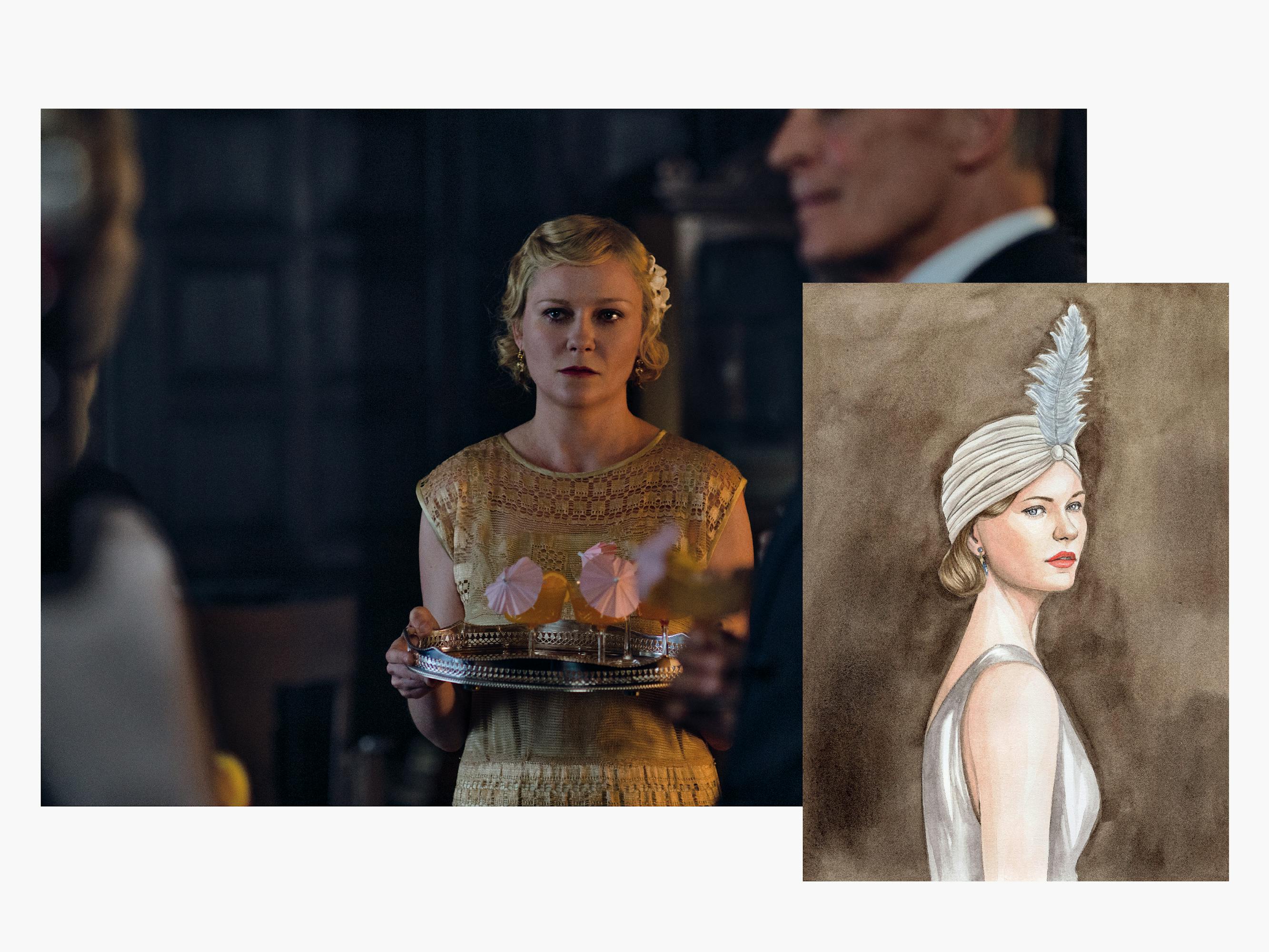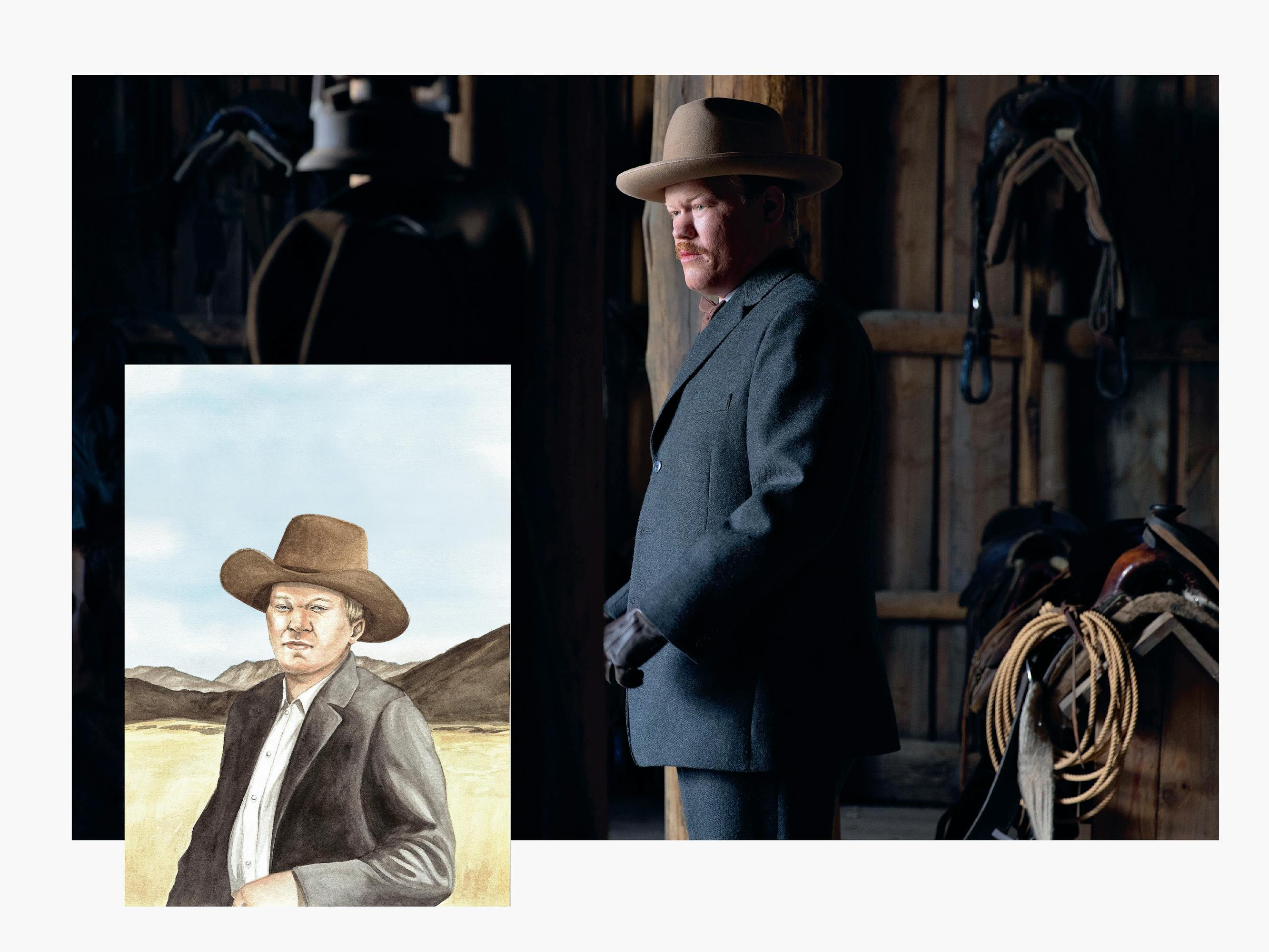Costume designer Kirsty Cameron outfits Jane Campion's sprawling drama, The Power of the Dog.
As writer-director Jane Campion set out to realize her vision for her drama The Power of the Dog, the Oscar-winning filmmaker was careful to enlist below-the-line team members with whom she felt an immediate kinship. “Meeting Kirsty Cameron, our costume designer, was like meeting a soul sister,” Campion says. “Her whole being is completely caught up in how to bring this story to life, how to help the characters feel themselves, and how to control the palette. She had the reins very firmly in her hands.”
The Power of the Dog tells the story of Phil Burbank (Benedict Cumberbatch), an inscrutable cowboy whose demeanor is the only thing more inhospitable than the Montana landscape he’s chosen to call home. Phil has long directed his ire at his younger brother George (Jesse Plemons), but when George brings home a wife, Rose (Kirsten Dunst), and her son, Peter (Kodi Smit-McPhee), to live on the family ranch, his attention shifts to the newcomers.
Campion told Cameron early on that her costumes needed to convey as much, if not more, about the characters than any dialogue would. “Any color that came into our story was really through costume,” Campion says. “There are all sorts of ways of controlling the feeling and the temperature of the storytelling with what colors you’re using or not.”
Cameron, whose previous credits include 2002’s Whale Rider and 2015’s Slow West, was thrilled to let her designs do the talking. “I loved the way that costume plays such a big part in the construction of the characters,” she says. “Rose, for example, undergoes a transformative journey from a working woman to the lady of the house, and through the fragility and insecurity that Phil instills in her, her clothes become something she uses as a façade. For Phil, his clothes are a construction of masculinity — they have an everyday, man of the earth feel to them — and are perhaps a way of covering up his true self.”
Setting the film in 1925 also allowed Cameron to play with the idea that these characters could order clothing by mail, adding even more possibilities for self-expression. “They’re kind of catalog cowboys — even they were following cowboys in the movies at that point because movies had begun,” Campion says. Did she have a favorite Cameron design? “I really fell in love with the ‘sheepies,’” she says of the sheepskin chaps that Cumberbatch wears. “They are satyr-like and very sexy.”




